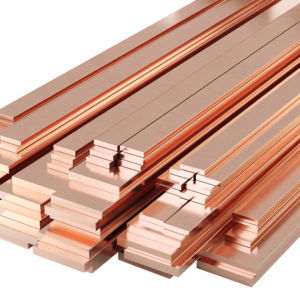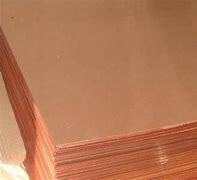1. Introduction
As of just 48 hours ago, global copper prices surged past $9,000 per metric ton due to supply chain bottlenecks and booming demand in renewable energy infrastructure (source: London Metal Exchange). Suddenly, that pile of old wiring in your garage isn’t junk—it’s potential cash. But before you melt it down or sell it, you’ll need to strip it properly. And if you’re working on a new project—be it earthing, welding, or plumbing—you’ll also need to pick the right copper rod. This guide covers both: how to strip copper wire like a pro and how to choose the perfect copper rod for your specific need.

2. How to Strip Copper Wire Safely and Efficiently
Stripping copper wire might seem straightforward, but do it wrong and you’ll either damage the metal or risk injury. Forget the old-school method of burning copper wire for scrap—that releases toxic fumes and ruins the copper’s resale value. Instead, use mechanical or thermal strippers designed for the job.
2.1. Best Tools for Stripping Copper Wire
- Manual wire strippers: Ideal for small jobs and precision work. Look for models with adjustable blades to avoid nicking the conductor.
- Automatic wire strippers: Great for long runs of uniform cable. They cut and strip insulation in one motion.
- Rotary wire strippers: Perfect for thick or armored cables. These spin around the wire, cleanly removing insulation without harming the copper inside.
- Thermal strippers (non-flame): Use controlled heat to soften insulation so it peels off easily—no open flame, no toxins.
2.2. Step-by-Step: Fast Way to Strip Copper Wire for Scrap

1. Sort your wires by type (e.g., THHN, Romex, coaxial). Different insulations require slightly different approaches.
2. Cut wires into manageable 1–3 foot lengths.
3. Use your chosen stripper to remove insulation. For bundled cables, consider a commercial stripping machine if doing large volumes.
4. Separate clean copper from insulation debris. Pure, bare copper fetches the highest price at scrap yards.

5. Store stripped copper in labeled containers—many buyers pay more for sorted grades (e.g., #1 bare bright vs. #2 insulated).
3. Choosing the Right Copper Rod for Your Application
Not all copper rods are created equal. The term ‘copper rod’ covers everything from grounding electrodes to welding consumables. Picking the wrong type could lead to poor conductivity, corrosion, or even safety hazards.
3.1. Copper Earth Rods and Grounding Solutions
If you’re installing an earthing system, you’ll likely need a copper earth rod. But which kind? Solid copper rods offer excellent corrosion resistance but are pricey. Most electricians opt for cost-effective alternatives like copper bonded earthing rods or copper clad steel ground rods. These combine a steel core (for strength) with a thick outer layer of pure copper (for conductivity and corrosion resistance).
Key options include:
- Copper bonded ground rod: Electroplated with copper over high-tensile steel.
- Copper clad earth rod: Uses metallurgical bonding for a more durable copper layer.
- Copper strip for earthing: Flat strips (like 25x3mm) are often used in substation grounding grids.
Always check local codes—some regions require minimum copper thickness or specific earthing rod price thresholds for compliance.
3.2. Welding and Brazing with Copper Rods
For joining copper components, you’ll need specialized filler materials. Don’t confuse copper welding rod with standard steel rods—they’re not interchangeable!
- Copper brazing rod: Used with a torch and flux to join copper pipes or fittings without melting the base metal.
- Copper to copper brazing rods: Specifically formulated for seamless joints between similar metals.
- Copper to copper welding rod: Rare but used in TIG welding for high-conductivity applications.
Note: True ‘copper rod welding’ is tricky because copper conducts heat so rapidly. Preheating and proper shielding gas are essential.
3.3. Structural and Electrical Copper Rods
Beyond grounding and welding, copper rods serve as bus bars, conductors, or raw material. Common forms include:
- Copper round bar: Also called rod copper, used in machining or as feedstock.
- Copper flat bar / copper bus bar: Essential in power distribution panels.
- Flexible copper bus bar: Used where vibration or movement occurs.
When sourcing, compare copper rod price versus performance. A copper ingot might be cheaper per pound, but a precision-drawn copper round bar saves time in fabrication.
4. Bonus: Copper Strip Applications You Might Not Know
While we’re on the topic, don’t overlook copper strip. From copper tape for snails (yes, gardeners use it as a barrier!) to nickel plated copper strip in electronics, thin copper strips have surprising uses. Need EMI shielding? Try a roll of copper strip. Building a custom transformer? Beryllium copper strip offers spring-like resilience. And if you’re searching for ‘copper strip near me,’ many metal suppliers now offer same-day pickup on copper strip roll stock—including 1mm copper strip or flat copper strip in various alloys.
5. Conclusion
Whether you’re stripping copper wire for scrap or selecting a copper rod for a technical project, knowledge is literal currency—especially with today’s high copper prices. Avoid dangerous shortcuts like burning insulation, invest in the right tools, and always match your copper product (be it rod, strip, or pipe) to its intended use. From copper bonded steel rods to beryllium copper strip, the right choice ensures safety, efficiency, and maximum value.
Our Website founded on October 17, 2012, is a high-tech enterprise committed to the research and development, production, processing, sales and technical services of ceramic relative materials such as How. Our products includes but not limited to Boron Carbide Ceramic Products, Boron Nitride Ceramic Products, Silicon Carbide Ceramic Products, Silicon Nitride Ceramic Products, Zirconium Dioxide Ceramic Products, etc. If you are interested, please feel free to contact us.

